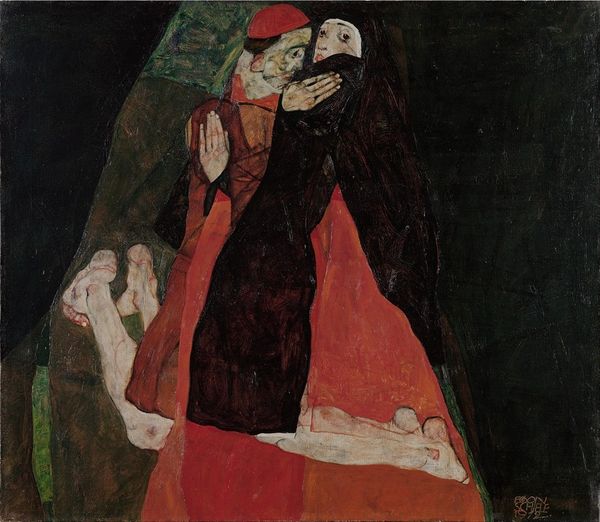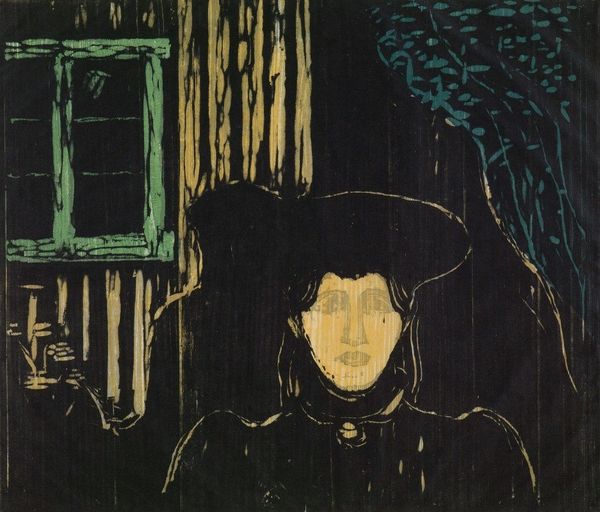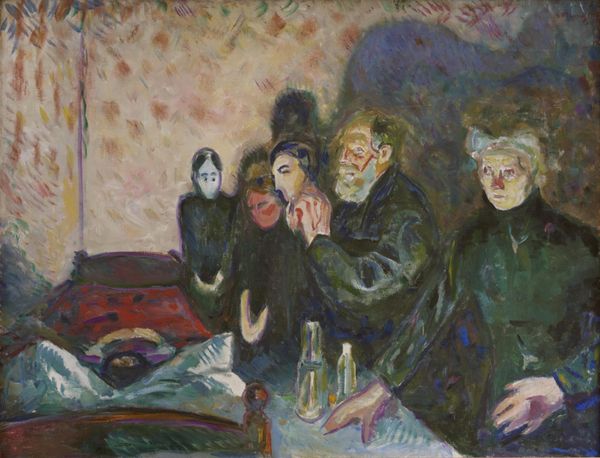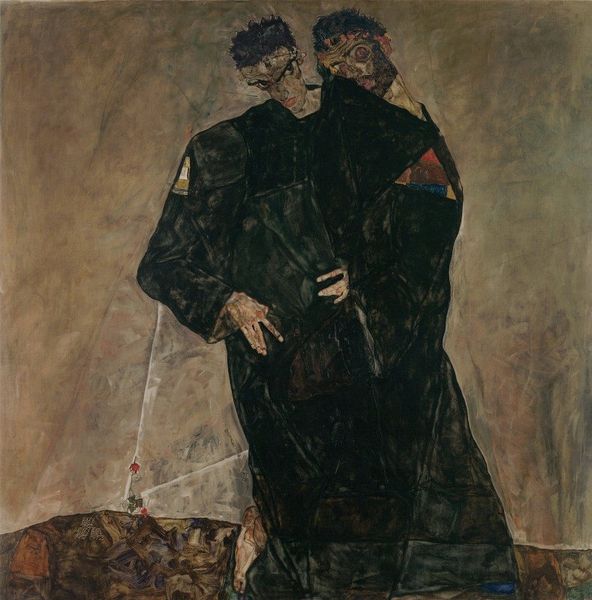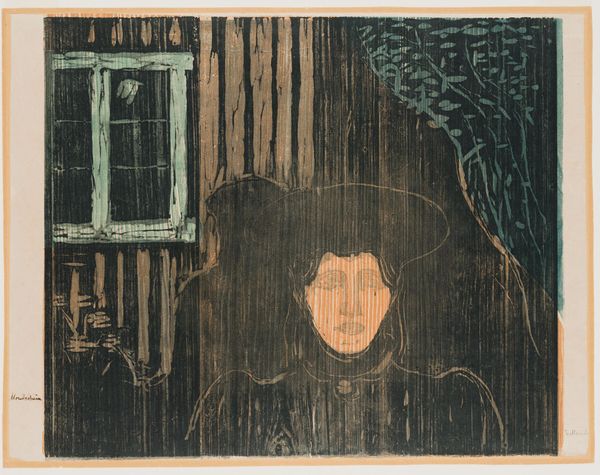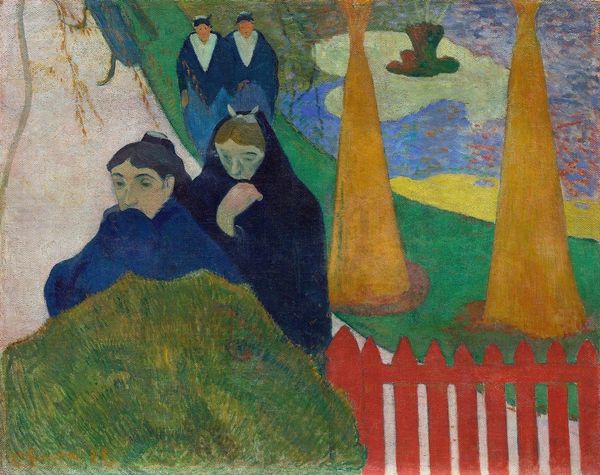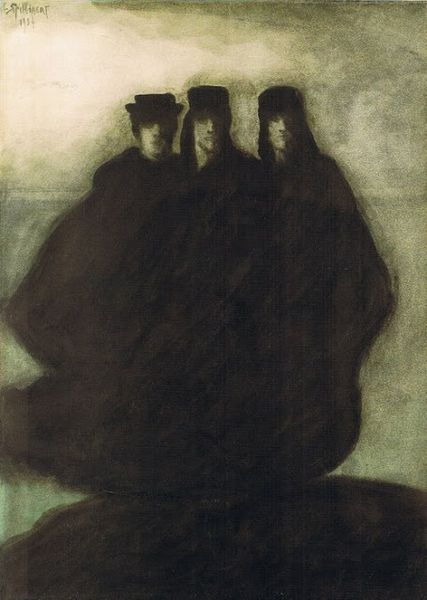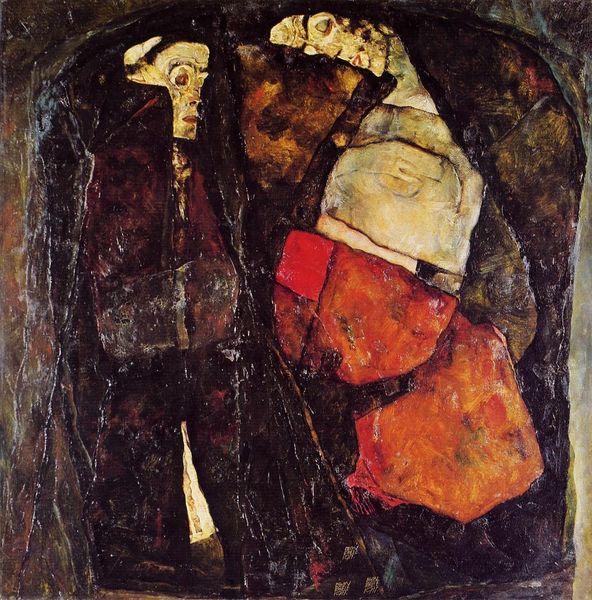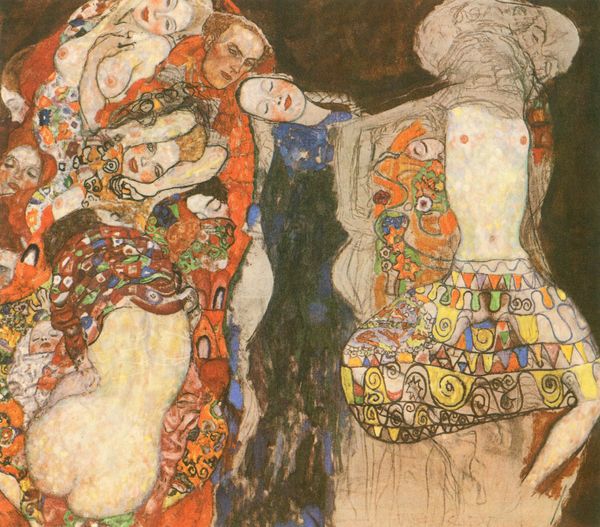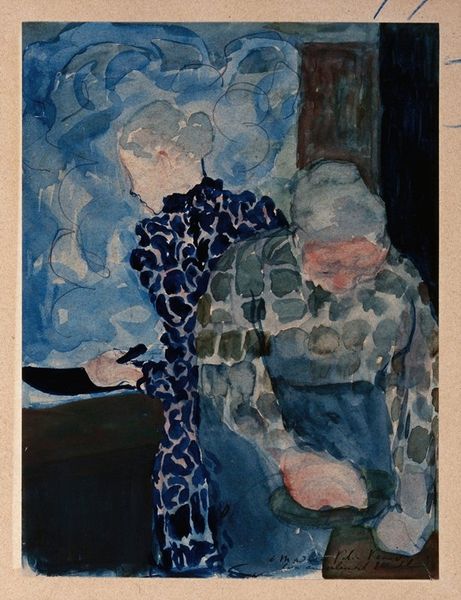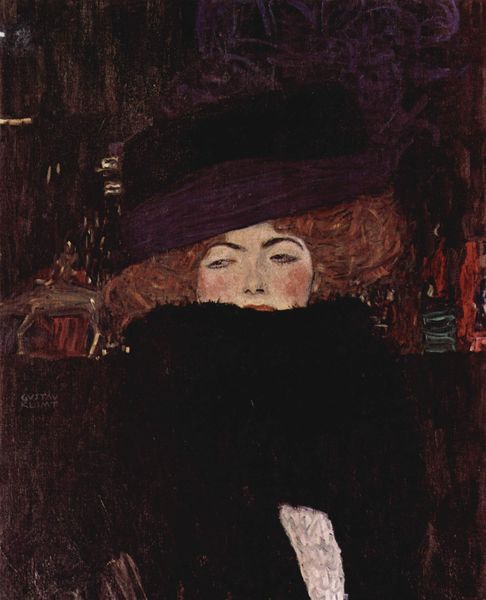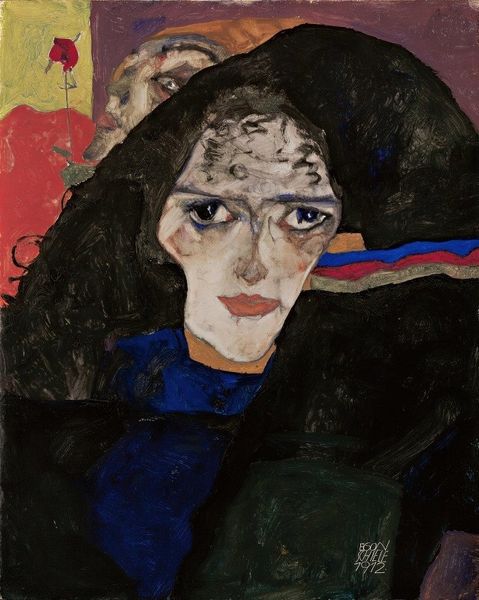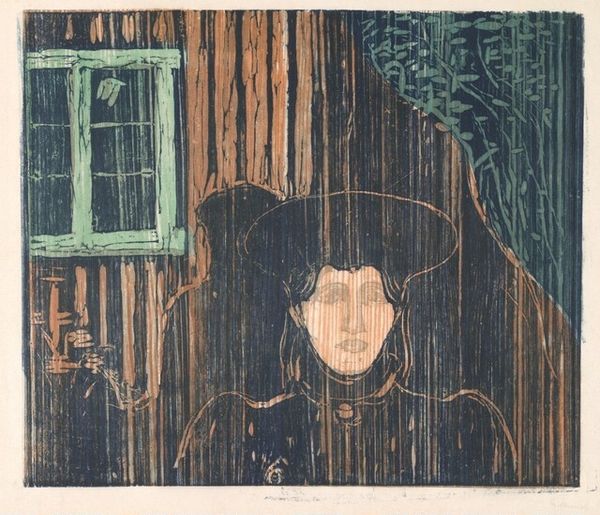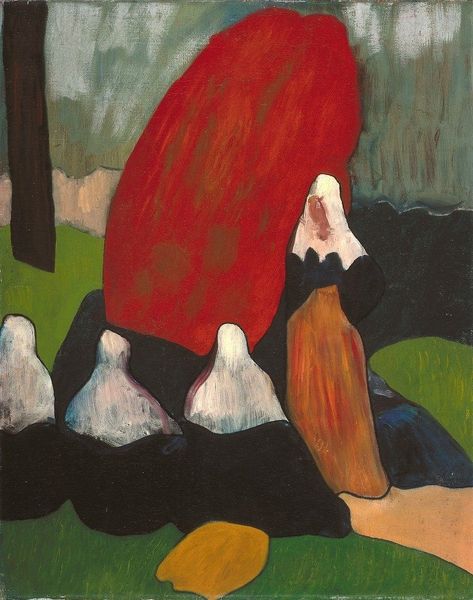
painting, oil-paint
#
portrait
#
painting
#
oil-paint
#
child
#
group-portraits
#
symbolism
#
mixed media
Copyright: Public domain
Editor: Here we have Gustav Klimt’s "Mother with Children" from 1910, an oil painting. It feels quite somber and heavy to me, almost like the figures are emerging from a dark abyss. What strikes you most about this piece? Curator: What stands out is the artist's perspective on motherhood within the context of early 20th-century Vienna, a society marked by both imperial grandeur and deep social inequalities. How might the use of such a dark palette challenge conventional representations of motherhood as purely nurturing and bright? Editor: That's interesting! I hadn't considered that. It does challenge the idealized image. The darkness almost feels protective, like a shield. Curator: Precisely! Could this be Klimt’s way of acknowledging the hardships and anxieties inherent in the maternal experience, especially for women navigating complex social structures? Editor: Perhaps. And their closed eyes add to that sense of introspection and being withdrawn from the outside world. Curator: Consider the socio-political climate of Klimt’s time. What role did women play? Where were they positioned within the narrative? Did Klimt advocate for gender equality, and did it influence this painting? Editor: I'd need to research more about that to say definitively. I suppose this piece prompts questions about the silent burdens carried by women in that era. Curator: Indeed. It asks us to move beyond a sentimental view of motherhood and towards a recognition of its multifaceted reality. I wonder about the choices women had during the rise of consumer culture and the pressures exerted by society. Editor: That really reframes how I see the artwork, considering it within a wider struggle. Curator: Absolutely, and reflecting on such perspectives is exactly why it continues to move us.
Comments
No comments
Be the first to comment and join the conversation on the ultimate creative platform.
